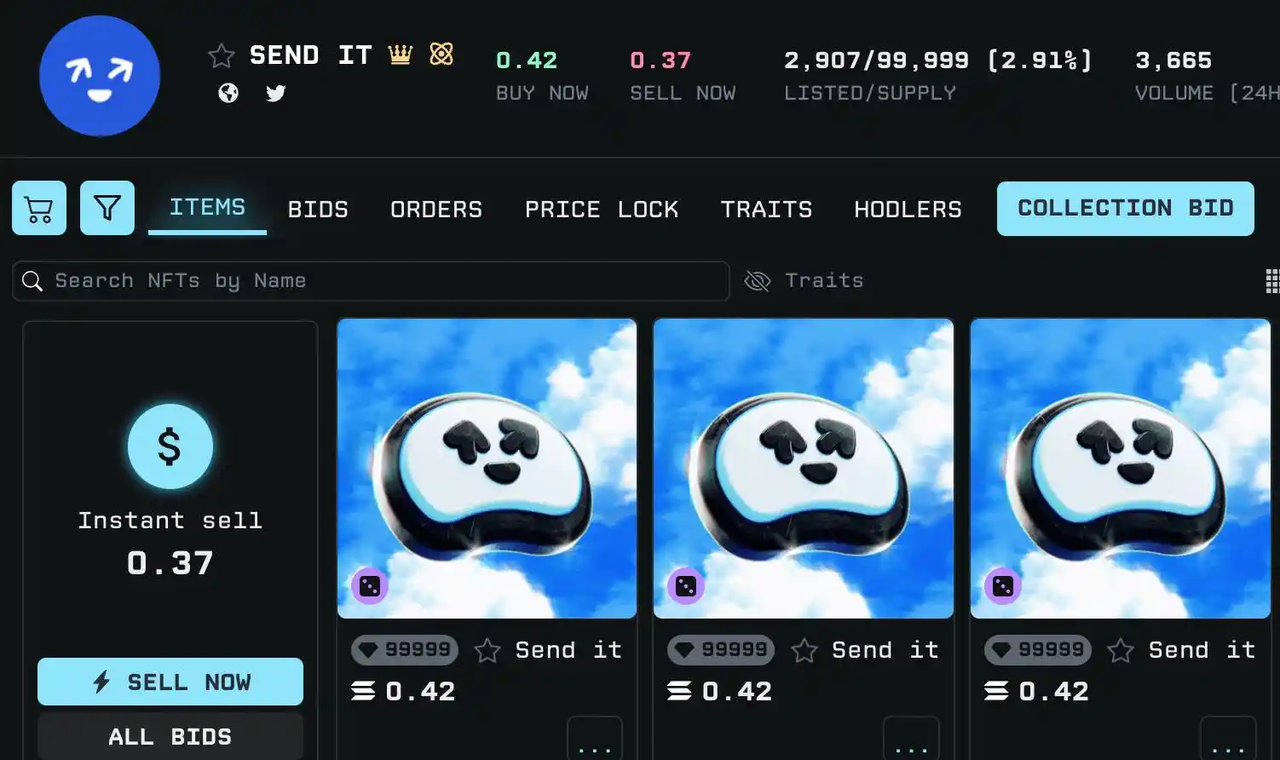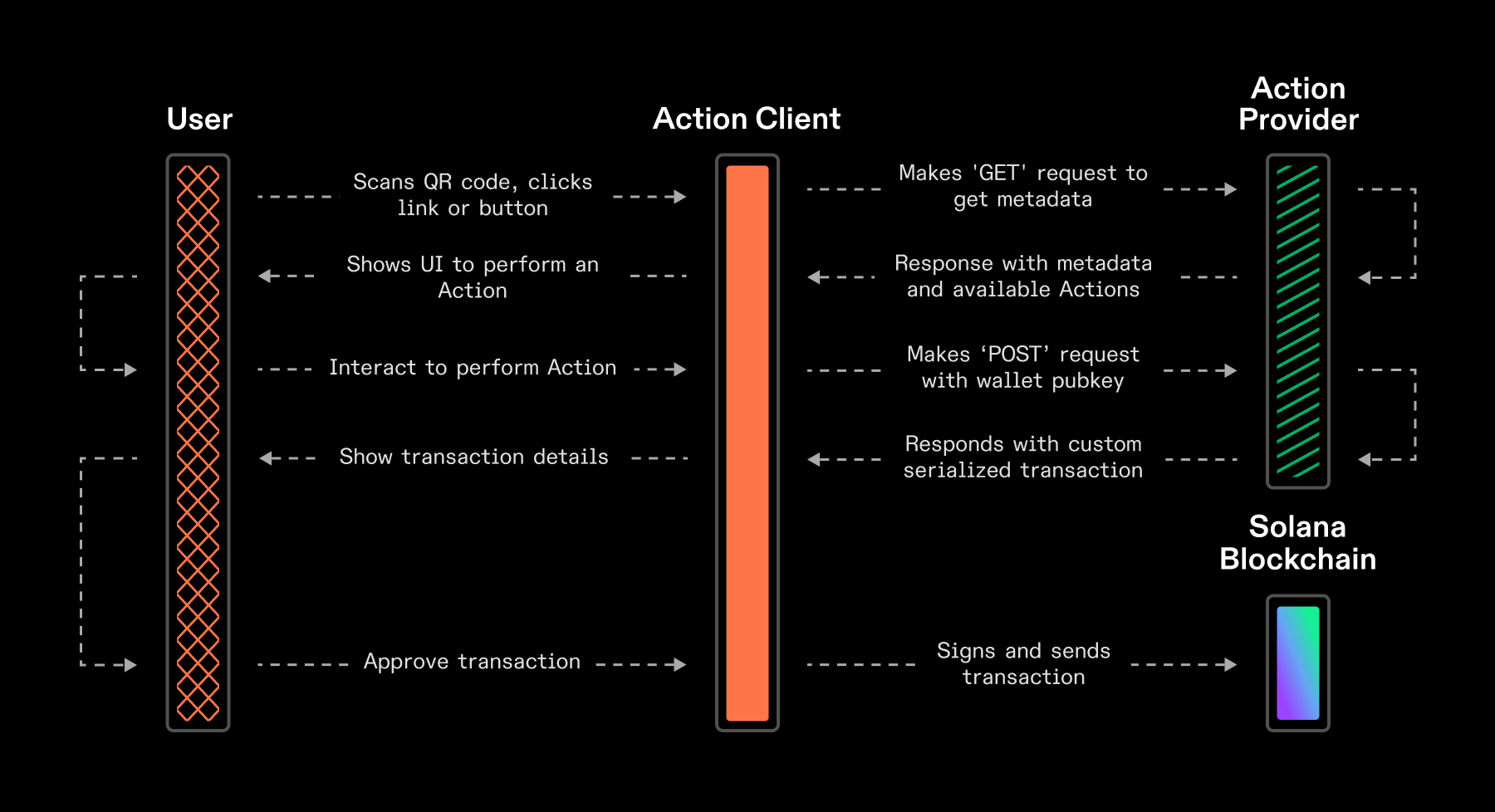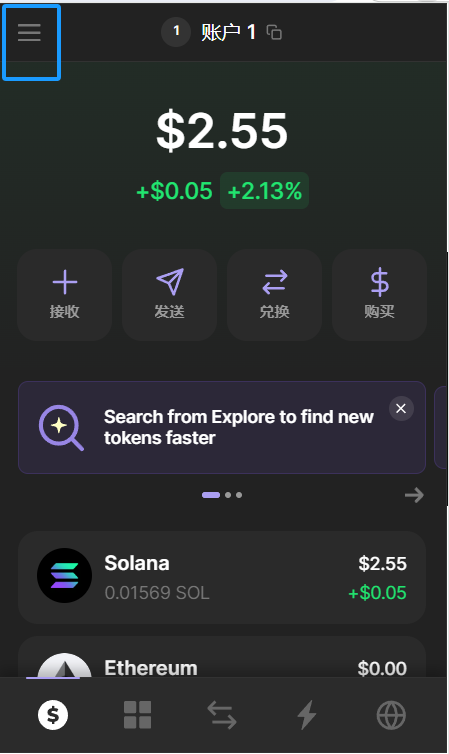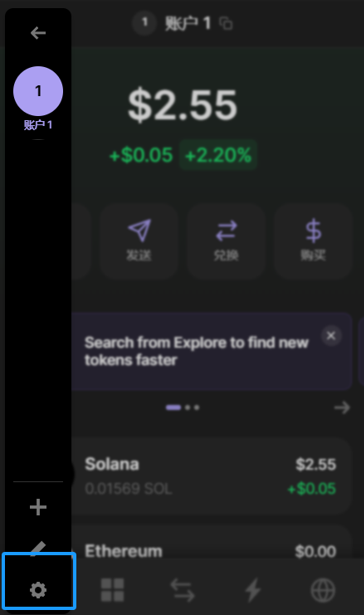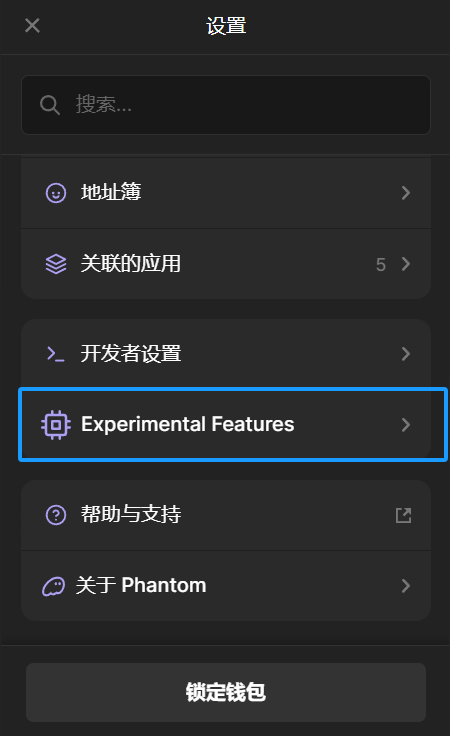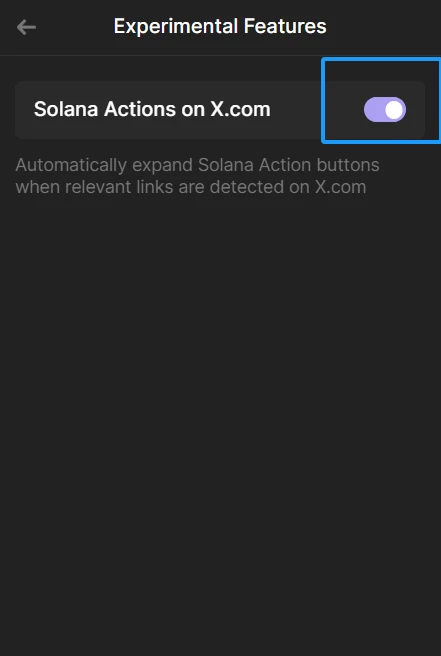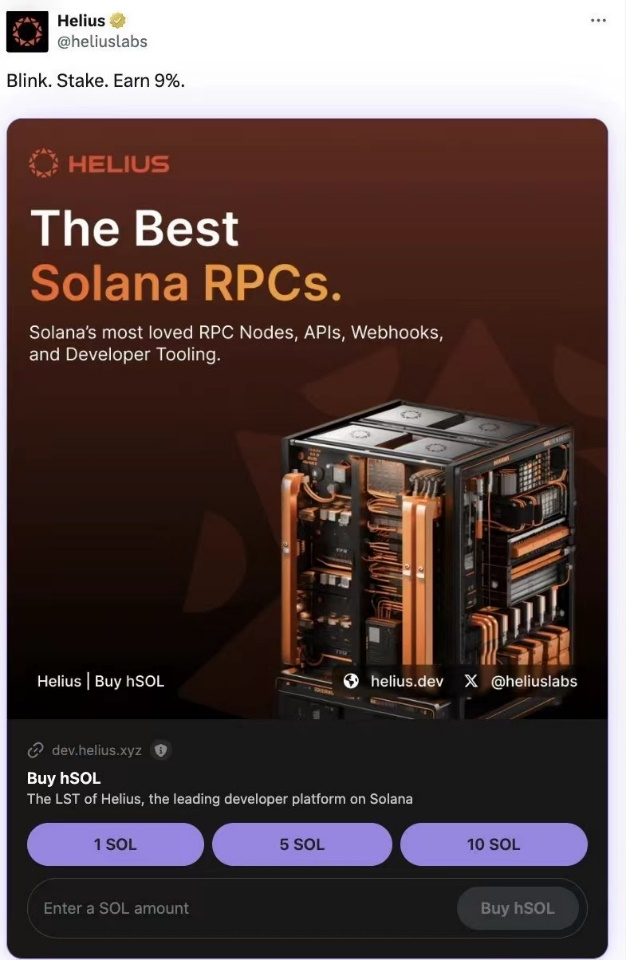دیباچہ:
The crypto market has been sluggish in the past few months, and the Solana ecosystem has also been affected by the overall market sentiment and has not performed well. However, with the launch of Solana Blink, the crypto market has been given a shot in the arm. As a breakthrough technology, Solana Blink can seamlessly embed on-chain activities into the social media platform X through a simple link, achieving an instant response user experience. This innovation not only brings new vitality to the Solana ecosystem, but also provides a new direction for the entire cryptocurrency market.
1. Background of the rise of SOL Blink
A new focus on the crypto market
In the crypto market, innovative technologies often become the focus of investors. Solana has performed well in this bull market. It has not only successfully shaken off the negative impact of the previous FTX incident, but also become one of the most watched public chains with its high market value and significant gains. However, as new projects continue to emerge and market competition becomes increasingly fierce, the emergence of Solana Blink has injected new impetus into Solana and its ecosystem, and is expected to maintain and strengthen its market position. Solana Blink is a big innovation, and its ease of operation is its biggest highlight. Users only need to connect their wallets and perform simple settings to directly conduct on-chain activities such as NFT transactions on social media platforms such as Twitter. This seamless integration greatly reduces the threshold for user participation and improves the user experience.
The Blink protocol’s flagship project, “Send It,” fully demonstrated the potential of the technology. The project was launched in freemint mode with a total supply of 99,999 NFTs. Subsequently, these NFTs were traded on the secondary market at a reserve price of 0.4-0.5 SOL, bringing considerable returns to participants, which is in line with the characteristics of the crypto market’s pursuit of quick returns and also proves the effectiveness of Solana Blink in improving market liquidity and participation.
The success of the Send It project has shifted the market focus from the previously highly-watched Play-to-Earn game of the TON ecosystem to the Solana public chain. Although Solana Blink has caused a certain degree of market excitement in the short term, its long-term impact remains to be seen. At present, it has not yet reached the level of large-scale Fomo. However, considering the innovativeness and practicality of the technology, it has the potential to drive wider adoption and application scenario development in the future.
2. Introduction to SOL Blink
What is SOL Blink
SOL Blink is a technical framework based on the Solana blockchain that aims to simplify and enhance the users interaction experience with the blockchain. SOL Blink is a client application that converts Solana Actions into shareable, metadata-rich links. With Blink, users can share these links on social media or other platforms, and other users can interact with the blockchain directly by clicking on the link. For example, Blink can trigger a transaction preview immediately when a user clicks on a link, improving the user experience.
Core functions and features of SOL Blink
1) Seamless blockchain interaction: SOL Blink allows users to trade directly on the Solana blockchain without leaving the current application or web page. This seamless experience enables users to trade more conveniently without switching to other platforms.
2) Shareable blockchain links: Blink converts Solana Actions into shareable links that users can share with others on social media or other platforms. These links are rich in metadata and can provide additional contextual information to enhance the users interactive experience.
3) Rich user interface: Client applications that support Blink are able to parse the Action URL and provide users with a standardized interactive interface. This enables users to easily select and perform different blockchain operations, such as signing transactions, voting, etc.
4) Support multiple clients: SOL Blink is compatible with a variety of client applications, including mobile wallets, chatbots, and websites. This flexibility enables developers to integrate blockchain functions in different environments.
5) Request/Response Mechanism: SOL Blink uses the standard HTTP request/response mechanism to obtain and process transaction information. The client first sends a GET request to obtain the metadata of available Actions, and then sends a POST request to obtain the signable transaction after the user selects an Action.
6) Security and Verification: SOL Blink ensures the security of users through Dialect’s public registry. Only verified actions can be launched on social media, providing additional security and preventing the risk of malicious links.
7) Developer-friendly: SOL Blink provides developers with SDK and documentation to help them quickly create and integrate custom Solana Actions. Developers can easily build API endpoints that return metadata and signable transactions.
Technical Principles of SOL Blink
The technical principles of SOL Blink mainly revolve around the concepts of Solana Actions and Blinks. Here are the key points:
1) Solana Actions: Solana Actions are compliant APIs that return transactions that can be previewed, signed, and sent to the Solana blockchain. These actions can be triggered in a variety of ways, such as QR codes, buttons, websites, etc., allowing developers to easily integrate blockchain transaction functions in their environment without having to jump to other applications or web pages.
2) Blinks: Blinks are client applications that turn any Solana Action into a shareable, metadata-rich link. They allow clients that support Actions (such as browser extension wallets, chatbots, etc.) to display additional interactive capabilities to users. For example, on a website, Blink can immediately trigger a transaction preview in the wallet without having to visit the decentralized application.
3) Request/Response Interaction Process: The workflow of SOL Blink includes multiple HTTP requests and responses:
The client first sends a GET request to obtain metadata about the available Actions.
After the user selects an Action, the client sends a POST request to obtain the transaction that the user needs to sign.
The wallet application helps users sign transactions and eventually sends them to the blockchain for confirmation.
4) Verification and security: Dialect maintains a public registry that lists verified blockchain links to ensure the safety and reliability of users. Only actions registered in the Dialect registry can be launched on social media, providing additional security.
Sol Blink technical flow chart
3. Newbies Perspective: How SOL Blink Works
Use everyday analogies to explain complex concepts
Imagine you are using platform X, scrolling through your feed. Suddenly, you see a tweet with a page for buying NFTs, and a button that says Blink below. You think to yourself, Wow, its so easy to buy NFTs? Thats right, this is the magical experience brought by SOL Blink.
SOL Blink is like a magic button for your social media. This button not only allows you to swipe your feed, but also allows you to perform various blockchain operations directly on the social platform, such as buying and selling NFTs, participating in voting, and even playing mini-games. You can think of it as a combination of WeChat Moments and Alipay, or Weibo with payment functions. However, SOL Blink is cooler than these, because it is not just about payment, but can realize various complex blockchain operations.
How is this accomplished? Lets use a simple example to illustrate:
Imagine you are browsing WeChat Moments and suddenly see a friend sharing a limited edition digital collectible, such as a super cute cat-themed avatar. This avatar is not only beautiful, but can also be used on various platforms. You are tempted and want to have it immediately.
1) You click the Get it now button below your Moments. This is like you are ringing a special doorbell (technically called an Action Client) and telling the system (Action Provider): Im interested in this!
2) The system (like WeChat Mini Program) responds to your request immediately and quickly prepares all the information needed for the purchase.
3) A familiar payment interface pops up, just like what you usually see when using WeChat Pay to buy things.
4) Click Confirm Payment and enter your payment password. This operation is like giving the system an execution command.
5) The system processes your request immediately, quickly completing the payment and transfer of digital collectibles.
6) After a few seconds, you will receive a message: Congratulations on getting the limited edition cat avatar!. You can use it on your WeChat avatar immediately.
The whole process is as smooth as sending red envelopes to friends on WeChat or shopping in a WeChat store. No need to download new apps or go through complicated registration processes, everything is done on the social platform you are familiar with.
Application Scenario
After you understand their principles, do you think their functions are just like that? We also have them. In fact, their functions are simple, but they are based on the content of blockchain, so their application scenarios will be more. According to a tweet 50+ ideas to build on Blinks-by Jian Yang retweeted by Send X, I have classified these 25 predictions into several categories. In terms of social media integration, users can directly conduct prediction markets on Twitter, pay for likes, or pay for content; in terms of financial services, group chats can be used to collect payments, private message transactions, and even pledge SOL to verification nodes; in the field of NFT and crypto art, Blink simplifies the casting, trading and interaction process of NFT; for community governance, it can be used to check airdrop qualifications and conduct DAO voting; in terms of games and entertainment, mini-chain games or memecoins can be created. Blink can also be combined with other platforms such as Telegram to realize encrypted paid chats; for developers, it provides the ability to embed Web3 into any website without SDK; in the field of commercial services, it can be used to purchase the time of influential people. Finally, when it comes to payments and transactions, Blink has the potential to transform any app into a Solana application.
4. Detailed steps for using SOL Blink
Using SOL Blink requires some preliminary preparation. Users need to set up a compatible crypto wallet, common choices include OKX and Phantom wallet. Here, we take Phantom wallet as an example.
1) Click on the upper left corner
2) Click Settings
3) Select Experimental Features
4) Select Open
5) When you see a tweet related to Blink, click it and a new module will appear. Click pay or mint to interact.
5. Advantages and potential risks of SOL Blink
فائدہ:
1) Lower the entry threshold: SOL Blink greatly lowers the threshold for ordinary users to participate in the Web3 world by simplifying the blockchain interaction process. This one-click operation mode has the potential to promote the mass adoption of cryptocurrency and blockchain technology.
2) Seamless social media integration: By embedding blockchain functionality directly into mainstream social media platforms such as Twitter, SOL Blink has created a unique user experience, effectively achieving out-of-circle traffic and attracting more traditional Internet users into the crypto world.
3) Viral potential: SOL Blink implements a rebate mechanism for decentralized exchanges (DEX), and this rebate is traceable. This feature provides a strong incentive for content creators and influencers (KOLs), and is expected to generate a viral effect similar to meme coins.
4) Innovative business model: By combining blockchain transactions with social media influence, SOL Blink has pioneered a new business model that may reshape the way value is distributed in the digital economy and bring new sources of income to creators and participants.
Potential challenges:
1) Mobile adaptation issues: As Farcaster’s founder pointed out, “SOL Blink currently has difficulties running on mobile devices. Considering that about 88% of Twitter users mainly access the platform through mobile devices.”
2) Scalability Challenge: As the user base grows, ensuring that the system can handle a large number of concurrent transactions without affecting performance will be a technical challenge.
SOL Blink’s Impact on the Crypto Market
The Solana ecosystem has invested a lot of resources in developing Blink features, and this move highlights its strategic importance. Although the current market value of the leading token related to Blink is only less than 10 million US dollars, compared with some meme tokens in the Solana ecosystem that have reached a market value of hundreds of millions of dollars, this number is relatively small in the cryptocurrency market. This market value gap may just indicate the huge growth potential of the Blink track.
Blinks technology is unique in that it seamlessly integrates blockchain functionality with social media platforms, and this innovation is likely to become the next important growth engine for the Solana ecosystem. Unlike the traditional pump and dump strategy, Blink provides substantial technological innovation and user value, which may attract more long-term investors and users.
In general, the Blink ecosystem is still in its early stages and is highly risky. The ecosystem is relatively barren, but it also contains huge opportunities. For investors and developers, Blink represents a new field with high risks and high returns, and its development trends are worth paying close attention to.
This article is sourced from the internet: SOL Blink Decrypted: Technical Secrets Even Newbies Can Understand
Related: Trump may use BTC as a strategic reserve? What is the impact on the crypto industry?
Last weekend, a rumor that Trump would announce BTC as a strategic reserve asset for the United States at the Bitcoin 2024 conference spread widely. With Bitcoin quickly returning to $68,000, the market sentiment also rose a lot. Everyone is looking forward to the crypto president to go crazy again at the Bitcoin conference this weekend. What are national strategic reserve assets? National strategic reserve assets refer to assets held by a country to cope with economic uncertainty, external shocks or other emergencies. These assets usually include traditional safe-haven assets such as gold, foreign exchange reserves represented by the US dollar, euro, and yen, special drawing rights (SDRs) allocated by the International Monetary Fund (IMF), and government bonds, foreign currency-denominated deposits, and other highly liquid assets. The composition and management…
